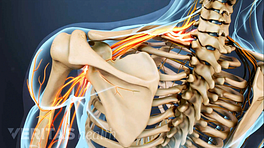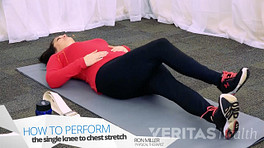Many patients arrive at their first physical therapy appointment expecting to receive hot packs, ultrasound and instructions on how to complete a series of exercises. These modalities are warranted in many instances and most therapists would agree that exercise is needed to help restore muscle imbalances. However, many therapists now approach the restoration of function from a different perspective. These therapists are interested in why a muscle isn't functioning properly and view back exercise not as the driving mode of recovery but as a complement to manual therapy. They may, for instance, look to restore proper sacroiliac or lumbar joint function to treat piriformis syndrome rather then directly manipulate the piriformis muscle through exercise.
Manual physical therapy is a specialized form of physical therapy delivered with the hands as opposed to a device or machine. In manual therapy, practitioners use their hands to put pressure on muscle tissue and manipulate joints in an attempt to decrease back pain caused by muscle spasm, muscle tension, and joint dysfunction.
Manual Physical Therapy is Less Established for Back Pain Management
While all physical therapists have the option to use manual therapy in their practices, many don't spend the time or the resources to become efficient in this area of practice. Patients should be aware that it is a lesser known physical therapy technique among physicians and may not be as commonly prescribed. Also, many of the conditions that practitioners treat with manual therapy are not demonstrated with imaging or lab tests but rather during motion testing and treatment, and therefore insurance company reimbursement may be limited.
While patients may be referred for physical therapy treatment by their primary care doctor, an orthopedic surgeon, or other doctor involved in their back care, most states have direct access laws permitting patients to seek help for low back pain from a licensed physical therapist without having to seek a written referral.
In This Article:
- Manual Physical Therapy for Pain Relief
- Specific Manual Physical Therapy Techniques
Manual Physical Therapy can Offer Pain Relief for Acute and Chronic Back Pain
Manual therapy can be helpful for the treatment of joints that lack adequate mobility and range of motion in certain musculo-skeletal conditions. This limitation can cause discomfort, pain, and an alteration in function, posture, and movement. Manual physical therapy involves restoring mobility to stiff joints and reducing muscle tension in order to return the patient to more natural movement without pain. Thus, manual physical therapy may provide back pain relief both for patients with chronic back pain involving joint problems, such as sacroiliac joint dysfunction, and acute back pain from soft tissue injuries such as a back muscle strain or a pulled back ligament. Although extensive clinical studies have yet to be performed on all areas of manual therapy, limited clinical data and patient reports support the assertion that manual physical therapy can be effective in relieving back pain for certain patients.
As a group, manual physical therapy techniques are aimed at relaxing tense back muscles and restricted joints in order to decrease back pain and increase flexibility. In general, manual physical therapy techniques employ the following types of movement:
- Soft tissue work, including massage, which applies pressure to the soft tissues of the body such as the muscles. This pressure can help relax muscles, increase circulation, break up scar tissue, and ease pain in the soft tissues.
- Mobilization/manipulation, which uses measured movements of varying speed (slow to fast), force (gentle to forceful), and distances (called 'amplitude') to twist, pull, or push bones and joints into position. This can help loosen tight tissues around a joint, reduce pain in a joint and surrounding tissue, and help with flexibility and alignment.
The following page covers the specific manual physical therapy techniques that are designed to alleviate low back pain related to muscle spasm, muscle tension, and joint problems.







